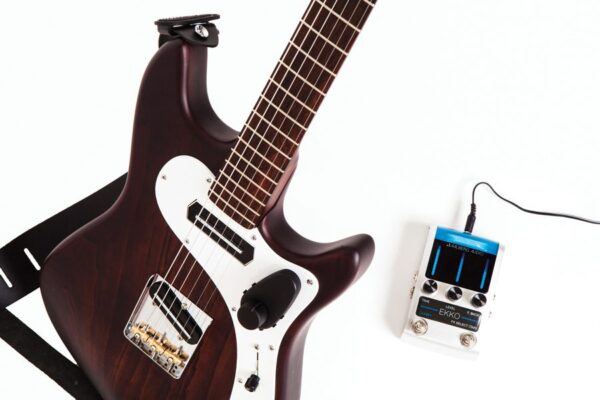
Rolling Stones move over, here come wireless electric guitar effects pedals
Aalberg Audio claims the development represents the biggest evolution of the guitar effects pedal since its earliest use by legendary guitarist Keith Richards on the 1962 Rolling Stones hit "(I Can’t Get No) Satisfaction".
Called ‘stompboxes’ in the guitar industry, effects pedals (which as a category include a variety of wired add-on effects pedals that musicians use to achieve around 15 separate audio effect-types from electric guitars such as ‘wah-wah’, ‘fuzz’, ‘reverb’, and ‘tremolo’) were used to create some of the most famous sounds of the 1960s and 70s. The pedals were made famous by such legendary early adopters as Jimi Hendrix and The Kinks and have been at the feet of virtually every electric guitar player ever since.
To be introduced on crowd funding website Indiegogo later this month (aalbergaudio.com/cfaalberg), Aalberg Audio’s solution comprises the "EKKO EK-1" wired delay effects pedal and a light weight (37g), palm-sized (30 x 73 x 43 mm) "AERO AE-1" wireless companion controller that is attached to the body or strap of a guitar. This allows guitarists to control every effects parameter – including up to three saved presets – on their pedal using their hands from wherever they are on stage (up to a range of 30 meters / 98-feet) rather than being restricted to the position of a conventional foot-operated pedal.
"One of the biggest challenges was making sure that by replacing a hardwired solution we didn’t lose the reliability or introduce any wirelessly-induced delays, that guitarists simply would not tolerate, compared to the ‘instant response’ of a wired connection," comments Aleksander Torstensen, CEO & Co-Founder of Aalberg Audio. "To make things even tougher, we also wanted a single-chip wireless solution with enough memory and processing power to handle what would otherwise demand two chips and lead to a significantly more complicated, costly, and cumbersome product form factor.
The nRF51822 is a highly integrated single-chip ULP wireless solution that incorporates a powerful 32-bit ARM Cortex M0 microprocessor, 2.4-GHz multiprotocol radio, up to 256kB of flash memory, and 16kB of RAM. The ARM microprocessor is easily able to handle both RF protocol and application software. Aalberg Audio uses nRF51822 SoCs running a 2.4-GHz proprietary RF protocol software (‘stack’) but the product can also support Bluetooth Smart® (formerly known as Bluetooth low energy) and ANT+ stacks.
The SoC also features a unique, industry-first software architecture that separates the stack from the application software. This arrangement eases product design because engineers can develop the application code safe in the knowledge that the factory-supplied stack can’t be corrupted. This software separation also improves operational reliability and stability.
"Creating music with electric instruments is all about controlling sound," adds Jake Hertzog, award-winning jazz guitarist. "The fact that Aalberg’s system gives the player greater ‘in-the-moment’ control of their sound represents a paradigm shift in what can be created with an electric guitar. To have your effects parameters at your fingertips dramatically enhances the playing experience and paves the way for infinite new musical ideas, drawn from this innovative technology."
Aalberg Audio says the EKKO EK-1 delay pedal is also just a first step and that it intends to build a full suite of AERO AE-1 compatible effects pedals in the future.
www.nordicsemi.com
https://aalbergaudio.com
www.indiegogo.com
 If you enjoyed this article, you will like the following ones: don't miss them by subscribing to :
eeNews on Google News
If you enjoyed this article, you will like the following ones: don't miss them by subscribing to :
eeNews on Google News




